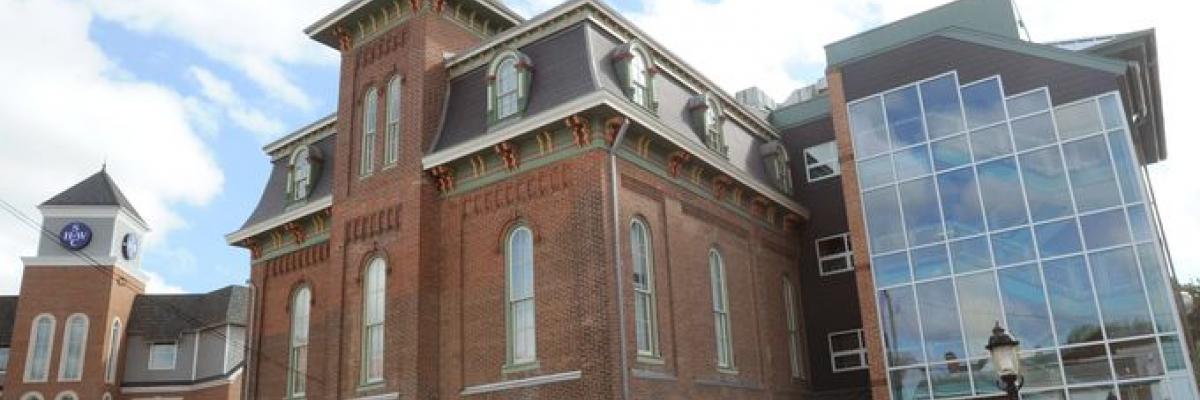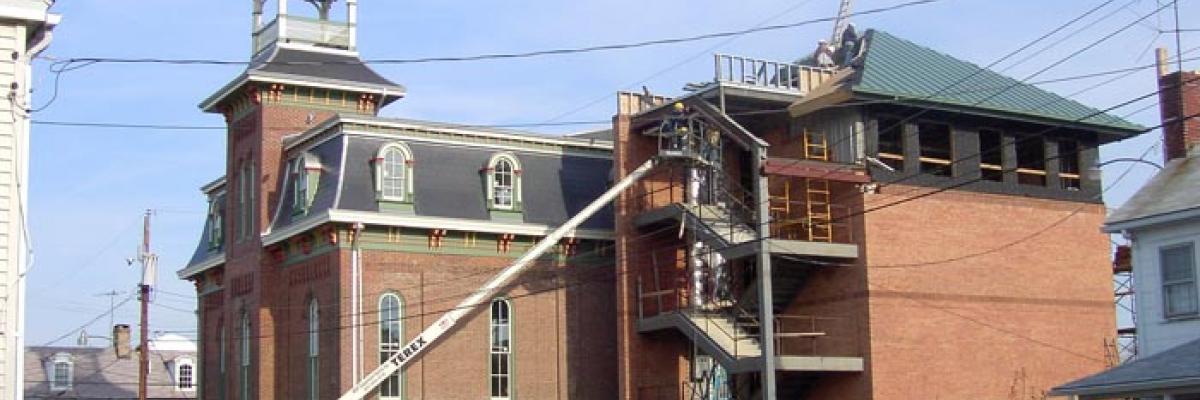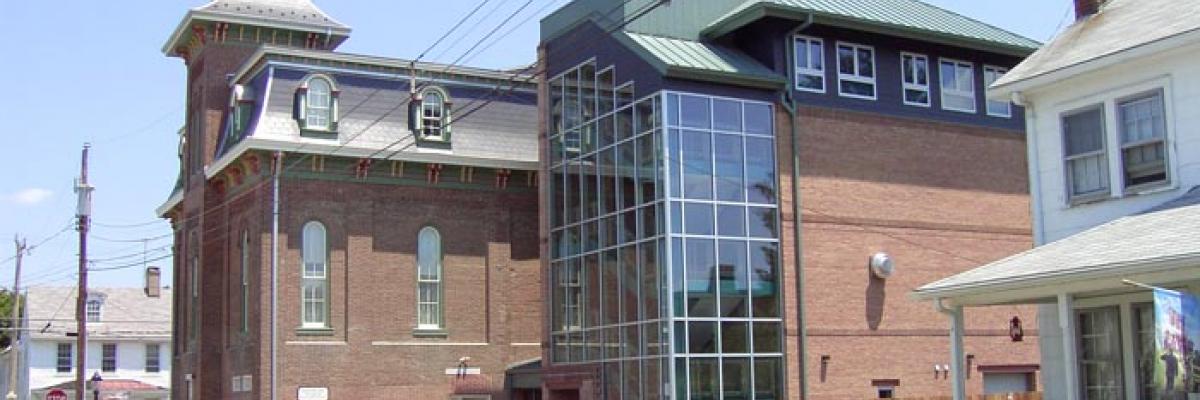History
America in 1869 was a different place than it is now. The nation had just survived the most divisive war in its history. Men walking the streets of towns like Smyrna had fathers and grandfathers who had fought in the American Revolution to guarantee freedom from tyranny, and they and their sons had just returned from the battles of Bull Run, Vicksburg, and Gettysburg that resolved the question of how far that freedom extended.
America badly needed to heal the rift caused by the underlying sentiments that had brought the nation to war, especially in border states like Delaware, and then, as now, officials turned to bricks and mortar to build symbols of the newly reunited nation.
The Smyrna Opera House was one such structure, and for nearly one hundred and forty years it has stood sentinel on the corner of South and Main Streets, a reminder of the past and a promise for the future, first pledged by the Town fathers of 1869 and then renewed by area citizens in 2002. The building’s history spans three centuries, and it is older now than the nation was when the Civil War ended, but its promise to the people of the area is just as inspirational as it was when it first opened its doors in the winter of 1870.
During its long existence, the building, formally known as The Old Town Hall, has housed a theatre, Town offices, police and fire stations, a public library, a movie house, a lodge hall and a jail. (In fact, the barred windows of the jail are still visible – a reminder of the past.) In time, each of these functions moved to other buildings; and in the restored Old Town Hall/Smyrna Opera House, only the library, the theatre and meeting room remain. An art gallery, dressing rooms, box office, and other amenities have been added to the recently renovated structure to make it, once again, the cultural and social hub for the communities of Smyrna and Clayton.
During the period from 1870 to 1920, the building played host to every important speaker and social event in the community. From high school graduations to cotillions, parties and turkey suppers, the social life of the town revolved around the Opera House. And celebrities from the worlds of politics, entertainment, and government appeared on the Opera House stage with frequency, bringing the outside world to this small town.
Among those who appeared at the Opera House were noted abolitionist Frederick Douglass; suffragettes Grace Greenwood, Lucy Stone, and Olive Logan; entertainers General Tom Thumb and Ada Gilman; musicians Frank Corbett and his Boston All-Star Orchestra and the Amphion Male Quartette; and, William Jennings Bryan, who spoke here while campaigning for president in 1900. The building was also the site of many summer Lyceum courses and Teachers Institutes.
Generations grew up in Smyrna attending Saturday night ‘socials’ (musical evenings featuring local and imported talent), high school graduations, debates, musicales, dances, and concerts at the Opera House, finishing off their evening by dining at a nearby oyster house after the event.
In time, however, live entertainment gave way to the flickering images of the silver screen, and the Opera House, ever adaptable, morphed into “The Roxy,” a picture palace playing two-and-three-night runs of popular films. Douglas Fairbanks, Myrna Loy, and Jean Arthur replaced Ada Gilman and General Tom Thumb, but the Opera House retained its place as the center of community entertainment.
On Christmas Night, 1948, a devastating fire nearly destroyed the Opera House and a block of homes and businesses along with it. But gallant volunteer firemen spent hours pouring water on the flames, managing to save the buildings, though the third floor and the landmark Bell Tower were in ruins. At first, the Town planned to tear the building down, but eventually it was decided to roof over the damage, resulting in a two-story, flat-roofed building with little resemblance to its former glory. The second floor was used occasionally for dances and club meetings but eventually it dwindled into storage space for the library, and the building began the slow process of decay that inevitably affects old buildings with glamorous pasts and uncertain futures.
Fifty years later, in 1998, however, the Smyrna-Clayton Heritage Association began a campaign to restore the “Old Town Hall” and with it, the Smyrna Opera House, so that Smyrna could once again have a ‘Community Cultural and Performing Arts Center.’ Five years and $3.6 million dollars later, the Bell Tower once again points proudly skyward, music echoes from the B. Stimson Carrow Auditorium, and parties, lectures, and art exhibits take place in the rebuilt third floor John W. Dickinson Room. When restoring the facility, great care was taken to preserve all the remaining original materials, from the flooring in the Auditorium to the stage doors and oval framed windows. With few archival records, the Restoration Committee had to rely on contemporary newspaper accounts of events and period research to recreate the Opera House as it looked in 1887, when the stage was added at the height of the Victorian era. Frederick Douglass IV at the Smyrna Opera House
With its Italianate, Second Empire architecture, mansard roof, and brick exterior, the Smyrna Opera House is an outstanding example of the Second Floor Opera House, so popular in the second half of the 19th century and virtually non-existent in today’s communities. In the 1870s nearly every community had such a structure. Today there are perhaps half a dozen restored examples in the United States, and the Smyrna Opera House is the only one in Delaware.
Come hear the echoes of Frederick Douglass’ stirring speeches, sit where audiences listened to William Jennings Bryan, the greatest orator of his day, and see the facility that entertained generations of Americans in an era that pre-dated television, and electronic games and gadgets. Come back to a simpler, more elegant time when children and parents gathered together to make music, perform a play, or enjoy a concert from touring professionals. Come to visit the 19th century where life was less frenetic and people more tranquil. Come visit the Smyrna Opera House!
Mission
The Smyrna Opera House was originally built in 1870 and was fully restored, reopening in March of 2003, as a community cultural arts center promoting access to the arts in central Delaware. Operated by the non-profit Smyrna-Clayton Heritage Association, the Smyrna Opera House is dedicated to showcasing and developing local creative, visual and performing artists while also offering affordable access to the arts and varied cultural and artistic experiences to people of all ages and backgrounds.


